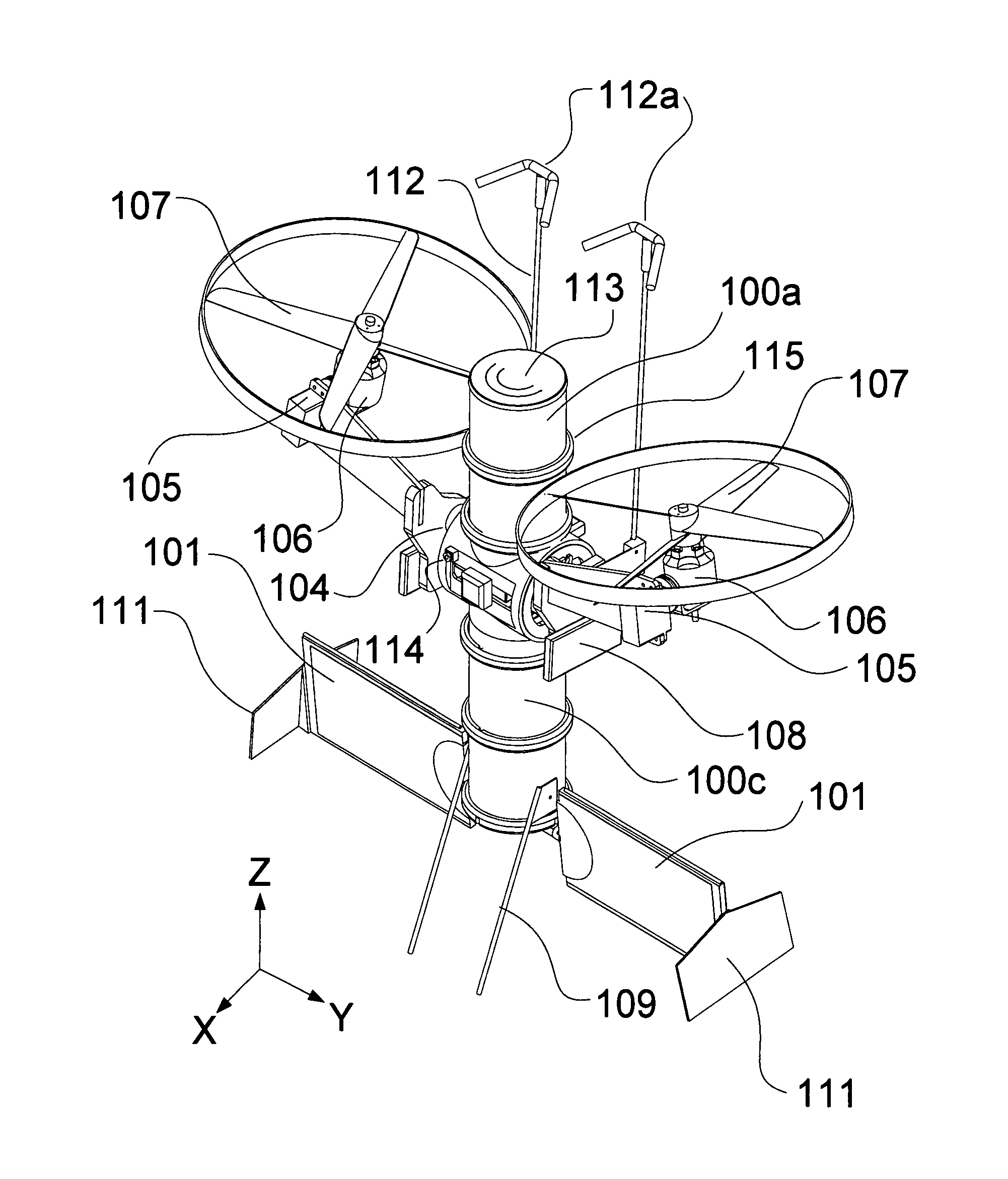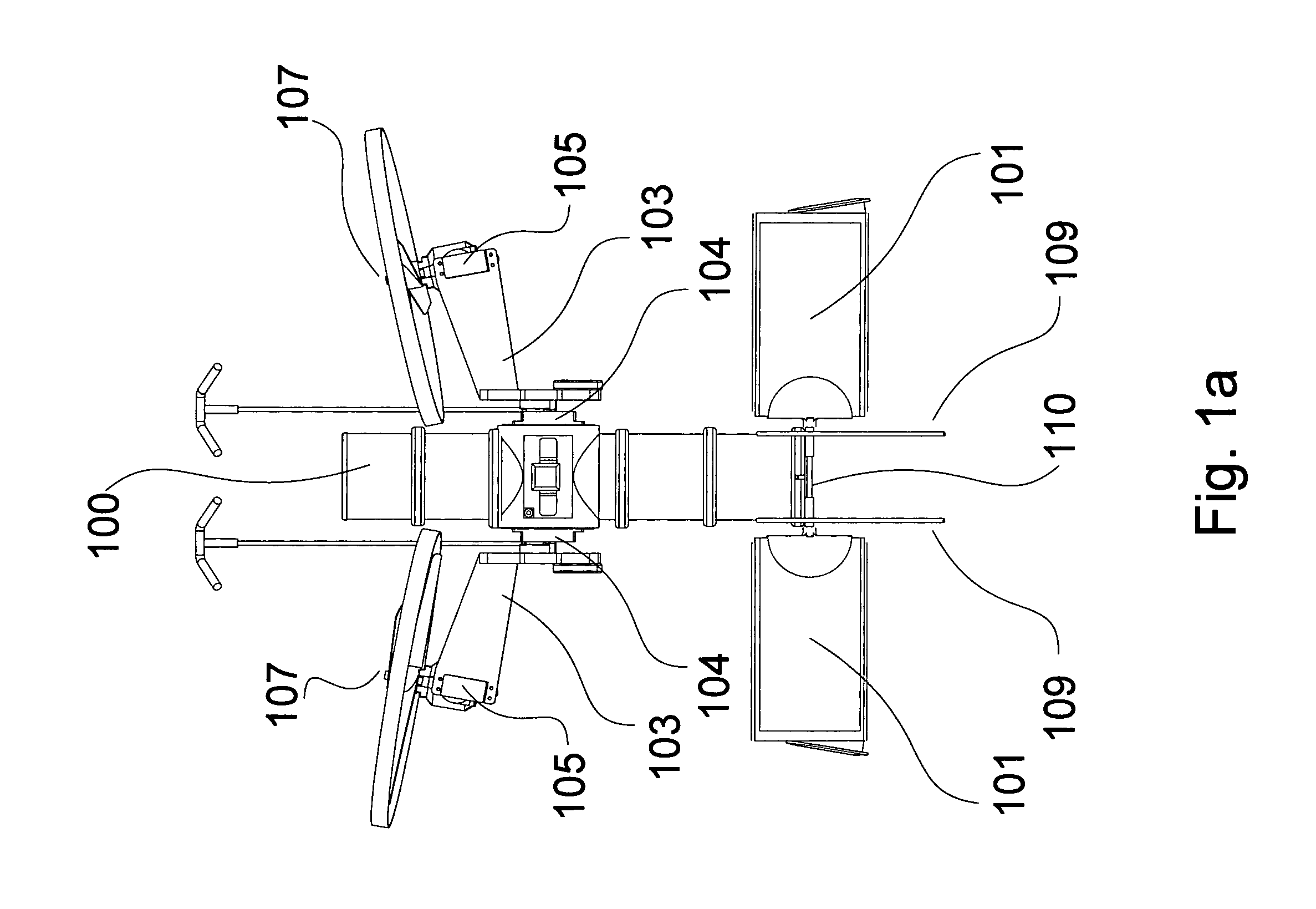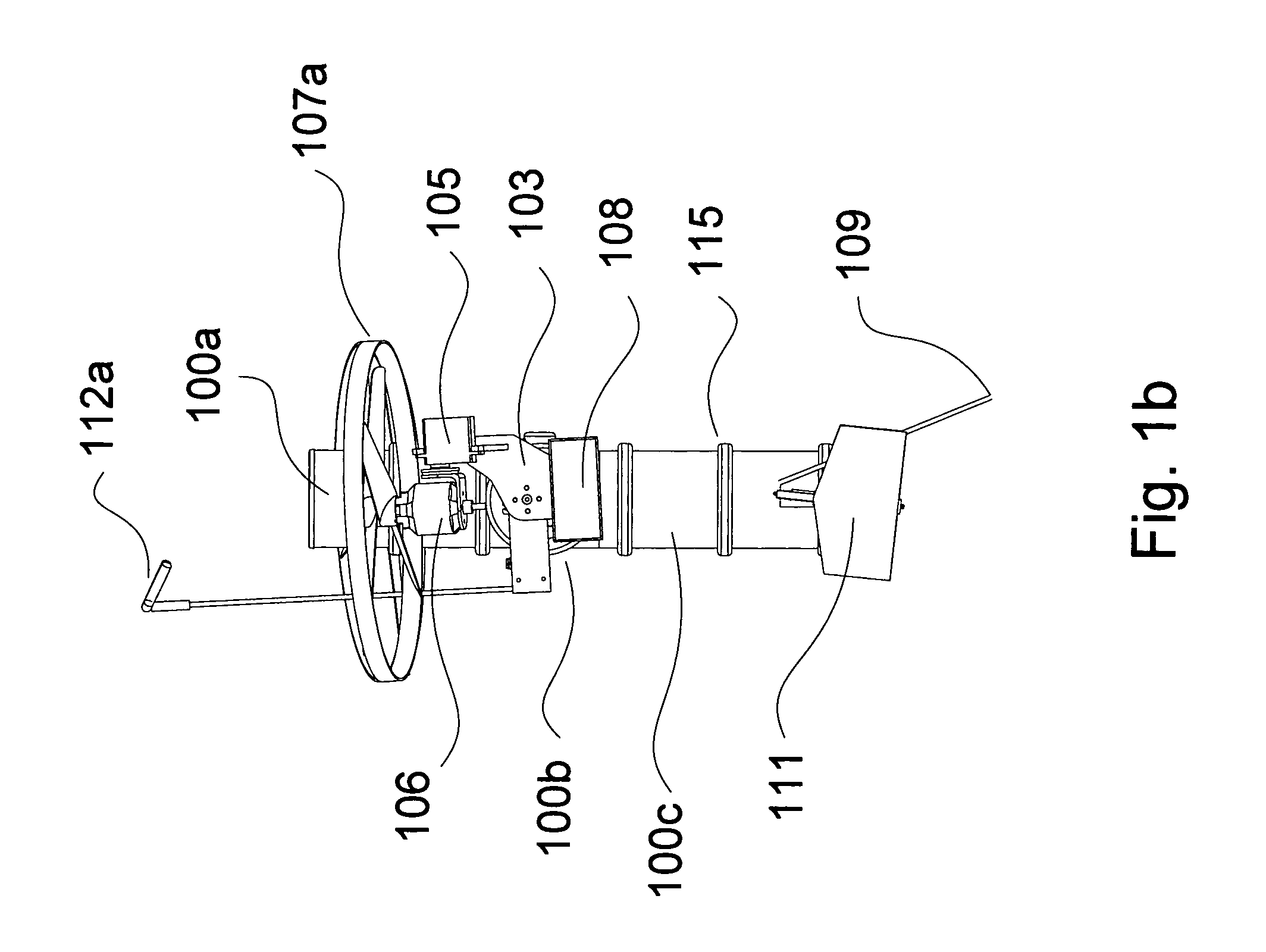Insect-like micro air vehicle having perching, energy scavenging, crawling, and offensive payload capabilities
a micro air vehicle, insect-like technology, applied in the direction of micro-sized aircraft, rotorcraft, convertible aircraft, etc., can solve the problems of reducing the quality of surveillance possible, limiting the loiter time of current mavs, and reducing the number of varied disadvantages of current approaches
- Summary
- Abstract
- Description
- Claims
- Application Information
AI Technical Summary
Benefits of technology
Problems solved by technology
Method used
Image
Examples
Embodiment Construction
FIGS. 1-9—Preferred Embodiment
[0048]In FIGS. 1a, b, c, and d, body 100 comprises upper 100a, middle 100b and lower 100c portions. On either side of body are attached left and right tilt actuators 104, which allow left and right rotor arms 103 to tilt in concert or differentially on a tilt axis parallel to the illustrated Y axis. Notably, this articulation allows movement of each rotor arm in a complete circular arc, if necessary, while tilt actuators 104 may be programmed to limit motion to less than a complete circular arc due to configuration and physical interference constraints. Body 100 may have any of a plurality of cross sections including circular, such as oval, oblong, asymmetric, or any other cross section that suits vehicle aerodynamics and internal carriage. Body extremities 100a and 100c may be tapered or blunt as needed for a given mission or objective. Attached to right and left rotor arms 103 are right and left teeter actuators 105, which support and teeter right and...
PUM
 Login to View More
Login to View More Abstract
Description
Claims
Application Information
 Login to View More
Login to View More - R&D
- Intellectual Property
- Life Sciences
- Materials
- Tech Scout
- Unparalleled Data Quality
- Higher Quality Content
- 60% Fewer Hallucinations
Browse by: Latest US Patents, China's latest patents, Technical Efficacy Thesaurus, Application Domain, Technology Topic, Popular Technical Reports.
© 2025 PatSnap. All rights reserved.Legal|Privacy policy|Modern Slavery Act Transparency Statement|Sitemap|About US| Contact US: help@patsnap.com



